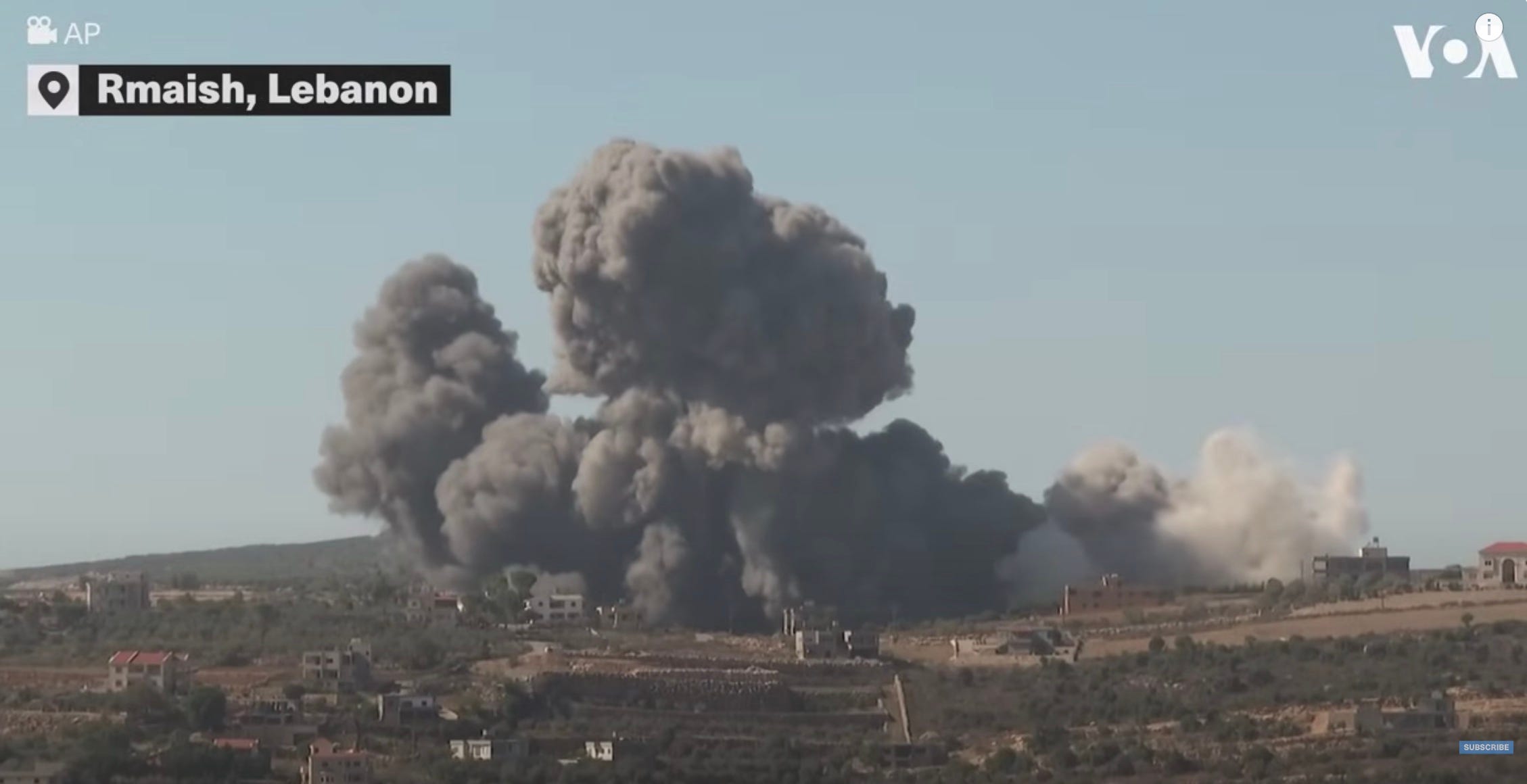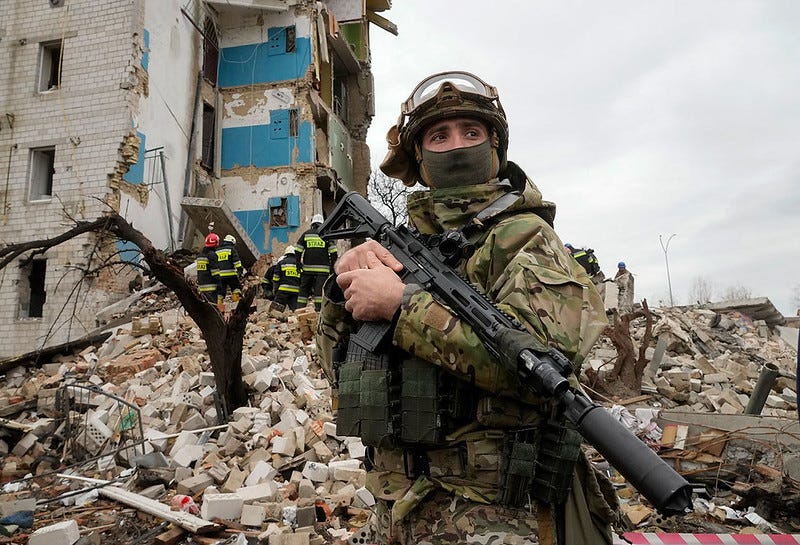The Israel-Hamas War has revealed a violent new world order
The main threat facing the international landscape isn't World War III — it's the spread of localized, inconclusive conflicts driven by rival global powers

When Hamas fighters erupted with murderous ferocity across Gaza’s border into Israeli towns on October 7, it seemed as if years of a predictable status quo in the Israel-Palestine conflict had suddenly been broken. After Israel launched its most brutal assault on Gaza yet in the wake of Hamas’s attack, fears of a broader regional conflagration have abounded as Iran’s proxies, notably Hezbollah, appeared to gear up for all-out war, and the US threatened to get involved if the situation were to escalate further. Elon Musk, with his trademark subtlety and nuance, speculated that the Israel-Hamas War and the War in Ukraine would collectively lead to World War III.
And yet in defiance of expectations, on November 3, Hezbollah’s chief Hassan Nasrallah implicitly refused to involve Hezbollah more deeply in the war in Gaza, seemingly indicating that Hamas had bitten off more than its backers in Iran could chew. Instead, the comparatively low-level — yet highly disruptive — state of play along the Israel-Lebanon border has continued unabated, all while the Iran-backed Houthis in Yemen have lobbed missiles at Israel and other Iran-aligned groups across Iraq and Syria have traded barbs with US forces in the region.
While a dramatic, explosive “war to end all wars” scenario has failed to materialize in the Middle East, a new status quo of relatively low-intensity conflict is engulfing it instead. As Nasrallah stated last week, although full-scale war has yet to take place, the front with Israel “will remain active” nonetheless.
Such low-level, open-ended conflict has been the normative mode of warfare now for decades, not only in the Middle East, but also worldwide. But this cloud of violence is spreading, and the war in Gaza shows us why it will continue to do so. At present, although the Israeli-Palestinian conflict is undergoing its largest flareup in decades, none of the powers involved — Israel, Iran, and the US — are interested in it escalating and spreading across the region. But by the same token, none of them can afford to back down from their ambitions either, and are forced to utilize limited violence to maintain their security posture and to save face on the greater battlefield that has emerged beyond the Gaza Strip.
The unfortunate truth is that this calculus is becoming the primary driver of conflict across the rest of the world, as friction points between regional and international powers are increasingly becoming mired in quasi-permanent states of violence. From the Israel-Lebanon border, to Syria and Iraq, to Africa’s Sahel, to Sudan, to the Caucasus, to Ukraine and NATO’s eastern flank, decisive confrontations between competing powers like Russia, the US, and Iran have largely given way to limited yet highly destabilizing conflicts with no clear conclusion in sight. Whereas the Cold War’s proxy wars were tied to the global competition between the US and the USSR, and the War on Terror was a conflict between non-state actors agitating against global American hegemony, the current multi-polar moment is far different — it has produced a multitude of separate clashes between an array of rival actors with their own distinct agendas. As a result, for perhaps the first time since the Industrial Revolution, the various wars taking place around the world today are no longer bound by any single, overarching driver, and at present, it is in none of the great powers’ interests to conclusively solve these conflicts by disrupting the global order and directly confronting other superpowers militarily.

The Russo-Ukrainian War might look like the most significant counterpoint to this argument. Having already resulted in hundreds of thousands of casualties in less than two years of war, it is far from a minor conflict, and has changed NATO, the West, and Russia’s role on the international stage. But the current full-scale Russian invasion is best understood as only the latest and most dramatic episode in a longer conflict that started in 2014, which much like the Israel-Hamas War, is also but one facet of a larger confrontation. Although the war in Ukraine is far from a frozen conflict at present, the grinding war of attrition on the battlefield and the dwindling appetite among some Western countries to continue supporting Ukraine means that the war will most likely eventually descend into an unsatisfying status quo where the current line of control becomes semi-permanent. At this point, neither Russia nor NATO is willing to give up on the conflict, but NATO is unwilling to either enter the war directly or to give Ukraine the vast resources it would require to decisively push Russia out of its territory — thus likely dooming it to a perpetual state of limbo that will eventually see a return of the sort of low-intensity warfare that dominated eastern Ukraine before 2022.
The same can be said of the Israel-Hamas War. Even though Israel has taken a decisive step by setting up conditions for an (ostensibly) temporary occupation of Gaza following Hamas’s ouster, this will by no means end the larger conflict. Violence in the West Bank will continue, as will the limited warfare taking place between Israel and Hezbollah on the Lebanese border. Having upended the previous rules of the game and opened the floodgates for an open-ended military back-and-forth, Israel and Hezbollah would have little incentive to back down following the IDF’s Pyrrhic victory in Gaza. Under the new rules of engagement since October 7, for either party to do so would signal weakness and a lack of commitment to the security of Israelis and Lebanese respectively. Southern Lebanon would come to resemble Syria in the sense that Israel would largely be able to act unimpeded to neutralize perceived threats, and Hezbollah would have few ways to retaliate other than hitting back at comparable targets in Israel as it has been doing for the past month. For its backers in Iran, such a state of affairs would remain preferable to both a full-scale war that might see Hezbollah wholly defeated by Israel, and to an effective ceasefire that would leave Iran’s “resistance” qualifications in tatters following its inaction in Gaza. And for Israel, having seen what an incursion by its enemies can look like, keeping its northern frontier sealed by all means necessary would become as much of a priority as stamping out the remnants of Hamas.
This is precisely the same dynamic that is unfolding in other theaters, including in Syria and Iraq, where Iran-backed militias have largely had a free hand to harass the US military without having to fear a decisive American response that would potentially risk a direct confrontation with Iran. In the north of both countries, Turkey has been waging its own low-level war with Kurdish militias for years, unwilling to back down from what it considers a key part of its security policy but unable to engineer a truly conclusive military intervention. In the southern Caucasus, Azerbaijan, backed by Turkey and increasingly by Russia, has steadily been encroaching upon Armenia’s periphery after decisively invading Nagorno-Karabakh earlier this year, and is now threatening Armenia itself. Since 2021, the Azeris have been testing the waters to see how much they can get away with along Armenia’s borders, pushing their de facto lines of control further and further west into the country. The US and the EU have so far assured Armenia that they’d have its back, and have supported it diplomatically in its efforts to negotiate with the Azeri side. Yet again however, the West is likely unwilling to throw its full weight behind Armenia’s defense, leading to an unstable and often violent status quo in which Azerbaijan is able to do as it pleases militarily so long as it doesn’t cross certain red lines too abruptly.
Meanwhile in Africa’s Sahel, for over ten years now, a potent mix of non-state Islamist actors and military juntas implicitly backed by Russia have created a destabilizing threat to the French-backed regional order, without the situation ever escalating into a full-scale war. Even the advent of a military coup in Niger this year, which has upended not only French influence but also America’s presence in the region, stopped short of catalyzing a conflict between Niger, its allies, and their chief nemesis, Nigeria, and only deepened the destabilizing rivalries and low-level violence that has come to plague the region. Further east too, the conflict between the Sudanese Armed Forces and the Rapid Support Forces has continued with no end in sight, and has drawn in several foreign actors including Egypt, Russia, and Ukraine.
The US-Iran proxy war in the Middle East and the Russo-Ukrainian War could both still escalate into truly catastrophic global conflicts — all it would take would be one side pushing the other just a little too far. But in an international order where the fear of losing power has almost always trumped the desire to risk it all to defeat one’s enemies, the much more subdued yet highly unstable reality we’re seeing today is much more likely. The result is a much more violent world, and one where scattered, often undeclared, “manageable” conflicts will continue to rage for decades, fueling global instability within an unbalanced international landscape. Contrary to Elon Musk’s doomsday claims, the biggest threat we’re facing now is not another world war — but rather a global paradigm where the fear of a world war allows such conflicts to fester and spread without any mechanism to resolve them.




